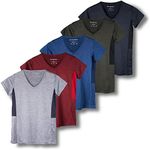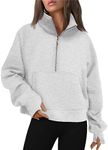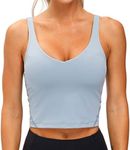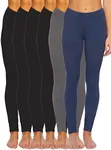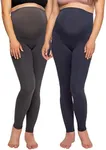Buying Guide for the Best Workout Clothes
Choosing the right workout clothes is essential for comfort, performance, and safety during exercise. The right gear can help you stay cool, dry, and comfortable, allowing you to focus on your workout rather than your attire. When selecting workout clothes, consider the type of exercise you'll be doing, the environment you'll be in, and your personal preferences. Here are some key specifications to consider when picking the best workout clothes for you.FabricThe fabric of your workout clothes is crucial because it affects breathability, moisture-wicking, and comfort. Common fabrics include cotton, polyester, and blends. Cotton is soft and comfortable but tends to retain moisture, making it less ideal for intense workouts. Polyester and synthetic blends are popular for their moisture-wicking properties, which help keep you dry by drawing sweat away from your skin. If you tend to sweat a lot or engage in high-intensity workouts, opt for moisture-wicking fabrics. For lighter activities, cotton or cotton blends can be comfortable and sufficient.
FitThe fit of your workout clothes can impact your range of motion and overall comfort. Workout clothes generally come in three fits: tight, regular, and loose. Tight-fitting clothes, like compression gear, can provide support and reduce muscle fatigue, making them suitable for high-intensity workouts. Regular fit offers a balance between comfort and support, ideal for most types of exercise. Loose-fitting clothes provide maximum comfort and freedom of movement, which can be great for activities like yoga or pilates. Choose the fit based on the type of exercise and your personal comfort preference.
BreathabilityBreathability refers to how well the fabric allows air to circulate, helping to keep you cool during your workout. Breathable fabrics, such as mesh or those with ventilation panels, are essential for high-intensity workouts or exercising in hot environments. If you tend to overheat or sweat a lot, look for clothes with high breathability. For cooler environments or less intense activities, breathability may be less of a concern, and you can opt for thicker, more insulating fabrics.
Moisture-WickingMoisture-wicking is the ability of the fabric to draw sweat away from your skin and allow it to evaporate quickly. This feature is important for keeping you dry and comfortable during your workout. Fabrics like polyester, nylon, and blends with moisture-wicking technology are ideal for high-intensity workouts or activities where you expect to sweat a lot. If you prefer low-intensity exercises or don't sweat much, moisture-wicking may be less critical, and you can choose based on other factors like comfort and fit.
DurabilityDurability refers to how well the workout clothes can withstand frequent use and washing without losing their shape, color, or functionality. Durable fabrics like polyester and nylon are known for their long-lasting properties, making them suitable for regular, intense workouts. If you plan to use your workout clothes frequently, invest in high-quality, durable options. For occasional use or low-intensity activities, durability may be less of a concern, and you can prioritize other features like comfort and style.
SupportSupport is particularly important for workout clothes like sports bras and compression gear. Proper support can prevent discomfort and reduce the risk of injury. Sports bras come in different levels of support: low, medium, and high. Low support is suitable for activities like yoga or walking, medium support for activities like cycling or weight training, and high support for high-impact activities like running or aerobics. Compression gear can provide muscle support and improve circulation, making it beneficial for high-intensity workouts. Choose the level of support based on the type of exercise and your personal needs.
FlexibilityFlexibility in workout clothes refers to the fabric's ability to stretch and move with your body. This is important for activities that require a wide range of motion, such as yoga, pilates, or dance. Look for fabrics with a high percentage of spandex or elastane, which provide excellent stretch and recovery. If your workouts involve a lot of stretching or dynamic movements, prioritize flexibility in your clothing. For more static or low-movement activities, flexibility may be less critical, and you can focus on other features like support and breathability.

